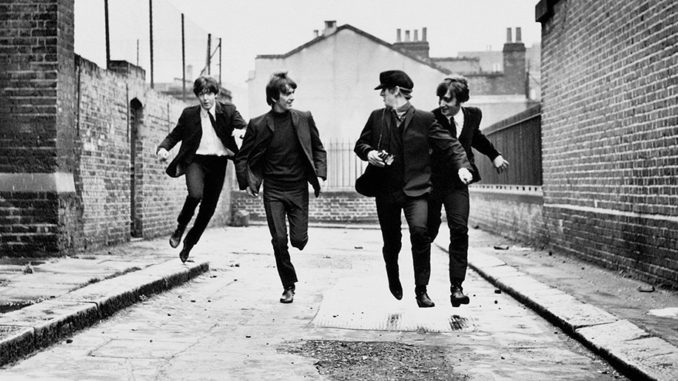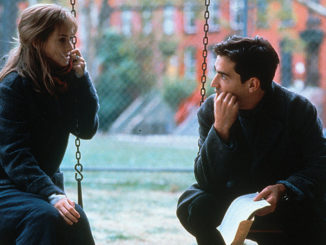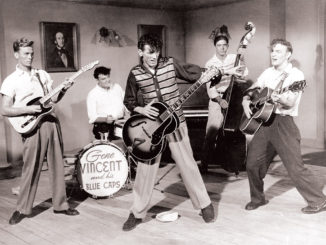
by Elvis Mitchell
The biggest question in popular culture since the arrival of MTV 25 years ago––besides how bland does one have to be to qualify as a VJ?––is: Has the music video ruined film editing?
The plundering ruthlessness of the cutting, which fragmented time, linearity and attention spans, caused so many to rail against what was once sneeringly termed “music video editing.” The advent of this style was as up-to-the-minute as reality TV, the permanent fixture of the network logo at the bottom of the screen and a nut-brown Michael Jackson. All of which, by the way, got their starts with MTV––and several of which have endured long enough to achieve institutional status; a zippier editing style being chief among them.
By the time music video’s mark on editing was noticed, I’d felt the rhythm of film was on the verge of changing anyway. For much too long a time, the movies shook off the advances of pop music like a sweaty camper trying to brush away mosquitoes––treating pop as a necessary evil that those darned kids used primarily as an irritant. And to me, that was the center of the argument; it was a jump from the humid, slowed reflexes of an editing approach that was linked to the European-based sway of old school music composition. To my eyes, the new assemblage work felt quick, breezy––American. But I was not convinced that the new fevered boldness would eventually supplant the classical concept of editing. (In the past decade, director Steven Soderbergh practiced this combination punch of splintered and more contemplative editing so deftly, but probably the first to use it was Spaghetti Western maestro Sergio Leone.)
But the streamlined, light-fingered cutting that was eventually as derided as the music video (and signaled the End of Civilization as We Know It) had cast a spell on the younger generation in its original and far more insidious form: the movie trailer, which already resorted to flash-card story compression and such tasty and unsavory hustles as including scenes that weren’t in the released version of the movie. More importantly, trailers often conveyed a kind of excitement and velocity that most of the films themselves could never hope to express.
It was the wave of directors who studied films––and filmmakers––from which to steal that seized history and blended it into what they were doing.
It was these short-form pieces that tickled and inspired many early music video directors, a number of whom shared an appetite for early ‘80s trailers for films such as the coming attractions clip for American Gigolo (1980)––delivered in a lurid, decadent, velveteen palette by director Paul Schrader, cinematographer John Bailey and production design consultant Fernando Scarfiotti, and driven by the allure of Giorgio Moroder’s proto-electronica “Palm Springs Drive.” That form of filmmaking insured what Italo Calvino described in his Cinema Goer’s Autobiography as “the promise, the anticipation, that would keep me excited for days to come.”
The more roundly acknowledged source by back-in-the-day video directors such as Russell Mulcahy and the team of Godley & Crème was the underground refuge of rock ‘n’ roll and jazz shorts, which also employed backbeat editing techniques. The high-gloss directing styles and newly impatient cross-cutting of British TV commercial directors Alan Parker, Adrian Lyne and Ridley and Tony Scott showed other influences, like the honeyed pictorial vitality of Bernardo Bertolucci (Scarfiotti was a key member of his team). But, crucially, the Brits were also taken with the invasive editing pulse from the bloodstream of music video’s other fathers.
One was Richard Lester––who essentially implanted a new heartbeat and invented the music video with the Beatles films A Hard Day’s Night (1964) and Help! (1965). He also employed his nervy rhythms on Juggernaut (1974), one of the first action pictures with adrenaline added to its narrative fuel. The other was Jean Luc Godard, who, in a whipsaw departure from tradition, was compelled to act as a mixmaster, splicing his oeuvre from A bout de soufflé (aka Breathless, 1960) to Week End (1967), as if the films were ransom notes, imparting soul and tenor rather than text and exposition. A shift in the application of cutting had already been added to the mix by Louis Malle, who introduced the dexterity and wit of what is considered modern-day editing to his feature-length Zazie dans le Metro (1960). He was probably first to slash the finish tape into ribbons.
The music video had cast a spell on the younger generation in its original and far more insidious form: the movie trailer. Trailers often conveyed a kind of excitement and velocity that most of the films themselves could never hope to express.
The next logical evolution came with John Boorman’s Catch Us If You Can (1965) and Point Blank (1967). On the latter, Boorman worked with editor Henry Berman (also influenced by Lester), who honed his blade on the American TV series The Man from U.N.C.L.E. (1964-68) and closed the gap between television and film editing––forms then thought to be separate and unequal. Both Boorman films added emotional weight to the editing style, which had been dismissed as glib and antic.
In the MTV era, condensed editing reached an apotheosis when producer Jerry Bruckheimer used director Lyne on Flashdance (1983). This stylized take on cutting broke through, and Bruckheimer went on to make it an integral element in all of his films, eventually bringing it to the small screen on his hit series, such as CSI (2000-present). In the meantime, attempts to abandon the slice-and-dice style in video never captured the imagination––although clip director and video avatar Julian Temple tried with a handful of single-take videos.
And, we have to admit, it was the wave of directors who studied films––and filmmakers––from which to steal that seized history and blended it into what they were doing. They just exposed this editing style to a public eager and hungry for something that fit with its sensibility. They––and we––just happened to be there when lightning struck.




